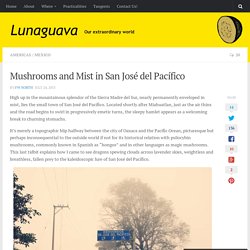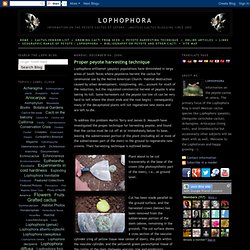

Mushrooms and Mist in San José del Pacífico. High up in the mountainous splendor of the Sierra Madre del Sur, nearly permanently enveloped in mist, lies the small town of San José del Pacífico.

Located shortly after Miahuatlan, just as the air thins and the road begins to swirl in progressively emetic turns, the sleepy hamlet appears as a welcoming break to churning stomachs. It’s merely a topographic blip halfway between the city of Oaxaca and the Pacific Ocean, picturesque but perhaps inconsequential to the outside world if not for its historical relation with psilocybin mushrooms, commonly known in Spanish as “hongos” and in other languages as magic mushrooms.
This last tidbit explains how I came to see dragons spewing clouds across lavender skies, weightless and breathless, fallen prey to the kaleidoscopic lure of San José del Pacífico. La Puesta del Sol – A Room with Pixelated Views We met Don Rafael at La Puesta del Sol, the loveliest place to stay in San José del Pacífico.
La Puesta del Sol Old Shamans and New Money. HOT TODDIES UNLIMITED: San Jose del Pacifico, the mushroom town. Completely not on our list but happily fell into our way, San Jose del Pacifico, located (2,705 meters above sea level) on the way from Zipolite to Oaxaca city.

Its very small, about 5 stores, 3 restaurants and bunch of houses on the hill. It's (w niebie) in the mountains surrounded by many different types of greens from pine trees, ganja to psychedelic mushrooms. It's also known as the Mushroom town. There are mushrooms everywhere, from sculptures to mushroom shape earrings, to tons of drawings and paintings of smiling mushroom, it's quite magical in its own way. We came here with Ivan, one of the drummers that we met in Zipolite. We stayed in a small place on a steep hill, very psychedelic. "Hola!!! Proper peyote harvesting technique - a cacti growing blog. Lophophora williamsii (peyote) populations have diminished in large areas of South Texas where peyoteros harvest the cactus for ceremonial use by the Native American Church.

Habitat destruction caused by urban development, rootplowing, etc., account for much of the reduction, but the regulated commercial harvest of peyote is also taking its toll. Some harvesters cut the peyote too low (it can be very hard to tell where the shoot ends and the root begin) - consequently many of the decapitated plants will not regenerate new stems and are left to die. To address this problem Martin Terry and James D.
Mauseth have investigated the proper technique for harvesting peyote, and found that the cactus must be cut off at or immediately below its base, leaving the subterranean portion of the plant (including all or most of the subterranean part of the stem) in the ground to regenerate new crowns. Their harvesting technique is outlined below. Peyote cactus - Encyclopedia. Click here if you're looking to buy a Peyote cactus cutting or Peyote seeds.

What is a Peyote cactus? The oldest cacti date back 20.000 years ago. Its special looks are because of its ability to survive extreme dryness and heat. The thorns are of course the most qualifying characteristic of cacti. These are actually leaves without any moisture, which turned them into thorns. Cacti store water in their stems. Botanical The Peyote cactus is a small, blue/green, thornless, balloonlike plant, with small amounts of wool on top and a thick root. The cactus grows very slowly and under natural circumstances only flowers after ten years.
History This plant played a prominent role in the religion and culture of the Indians in Central America. Nowadays the Peyote is still strongly respected by the original inhabitants of this region, like the Huichol, and also by researchers in entheogenics from all over the world. Chemistry Active compounds: mescaline (3,4,5-trimethoxy-B-phenethylamine) Effects Usage.
WHERE TO FIND PEYOTE IN SAN LUIS POTOSI.... Written by the President of “HEMP PUBLISHING COMPANY®” Salvia divinorum. Salvia divinorum (also known as Diviner's Sage,[2] Ska María Pastora,[3] Seer's Sage,[4] and by its genus name Salvia) is a psychoactive plant which can induce "visions" and other hallucinatory experiences.

Its native habitat is in cloud forest in the isolated Sierra Mazateca of Oaxaca, Mexico, where it grows in shady and moist locations.[5][6] The plant grows to over a meter high,[1] has hollow square stems, large leaves, and occasional white flowers with violet calyxes. Botanists have not determined whether Salvia divinorum is a cultigen or a hybrid; native plants reproduce vegetatively, rarely producing viable seed.[7][8] Mazatec shamans have a long and continuous tradition of religious use of Salvia divinorum, using it to facilitate visionary states of consciousness during spiritual healing sessions.[1] Most of the plant's local common names allude to the Mazatec belief that the plant is an incarnation of the Virgin Mary, with its ritual use also invoking that relationship.
History.